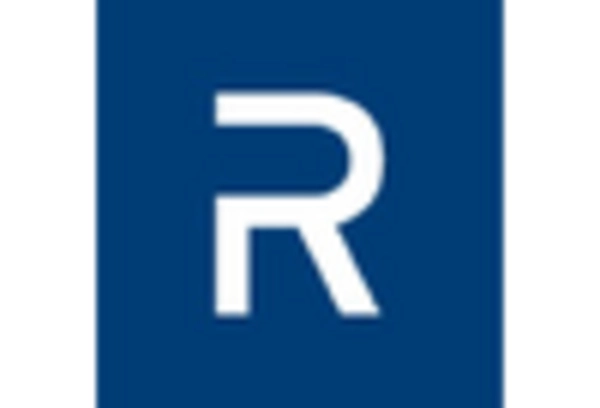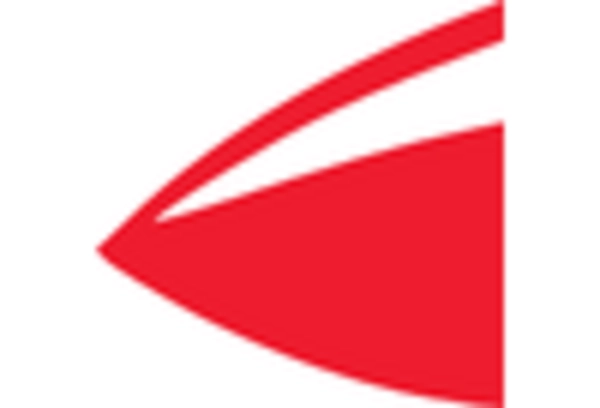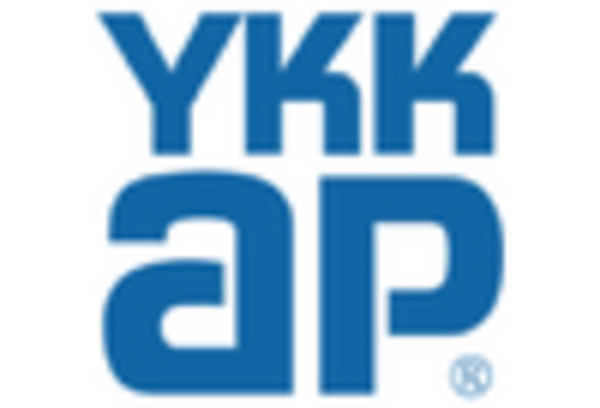Growing Urbanization
The increasing trend of urbanization in the United States is a pivotal driver for the aluminum curtain-wall market. As more individuals migrate to urban areas, the demand for high-rise buildings and commercial spaces rises. This urban expansion necessitates the use of modern architectural designs, where aluminum curtain walls are favored for their aesthetic appeal and functional benefits. In 2025, it is estimated that urban areas will house approximately 85% of the US population, further propelling the need for innovative building solutions. The aluminum curtain-wall market is likely to benefit from this trend, as architects and builders seek materials that offer both durability and design flexibility.
Architectural Innovation
Architectural innovation is a driving force behind the aluminum curtain-wall market. As architects push the boundaries of design, they increasingly incorporate aluminum curtain walls to achieve unique aesthetics and functional performance. The lightweight nature of aluminum allows for expansive glass facades, enhancing natural light and visual appeal. In 2025, the market is projected to grow by approximately 5% annually, driven by innovative designs that prioritize both form and function. The aluminum curtain-wall market is thus positioned to thrive as architects and developers seek materials that facilitate creative expression while meeting structural requirements.
Energy Efficiency Initiatives
Energy efficiency has become a critical focus in the construction sector, significantly impacting the aluminum curtain-wall market. With rising energy costs and increasing awareness of environmental issues, building owners are seeking solutions that reduce energy consumption. Aluminum curtain walls, known for their thermal performance and insulation properties, are increasingly being specified in new constructions and renovations. According to recent data, buildings equipped with energy-efficient curtain walls can reduce energy costs by up to 30%. This trend aligns with the broader push for sustainable building practices, positioning the aluminum curtain-wall market as a key player in the quest for energy-efficient solutions.
Increased Construction Activities
The resurgence of construction activities across the United States is a significant driver for the aluminum curtain-wall market. With infrastructure development and commercial projects on the rise, the demand for high-quality building materials is escalating. In 2025, the construction sector is expected to grow by 4% annually, with a notable increase in the use of aluminum curtain walls in both residential and commercial buildings. This growth is indicative of a broader trend towards modern construction techniques that prioritize efficiency and sustainability. The aluminum curtain-wall market stands to gain from this uptick in construction, as builders seek materials that offer both performance and aesthetic value.
Regulatory Support for Sustainable Building
Regulatory frameworks in the United States increasingly support sustainable building practices, which is a crucial driver for the aluminum curtain-wall market. Government initiatives aimed at reducing carbon footprints and promoting energy-efficient buildings are influencing construction standards. As regulations become more stringent, builders are turning to aluminum curtain walls, which comply with energy efficiency standards and contribute to LEED certification. In 2025, it is anticipated that over 50% of new constructions will adhere to these sustainable guidelines, thereby enhancing the demand for the aluminum curtain-wall market. This regulatory support not only fosters innovation but also encourages the adoption of environmentally friendly materials.

















Leave a Comment